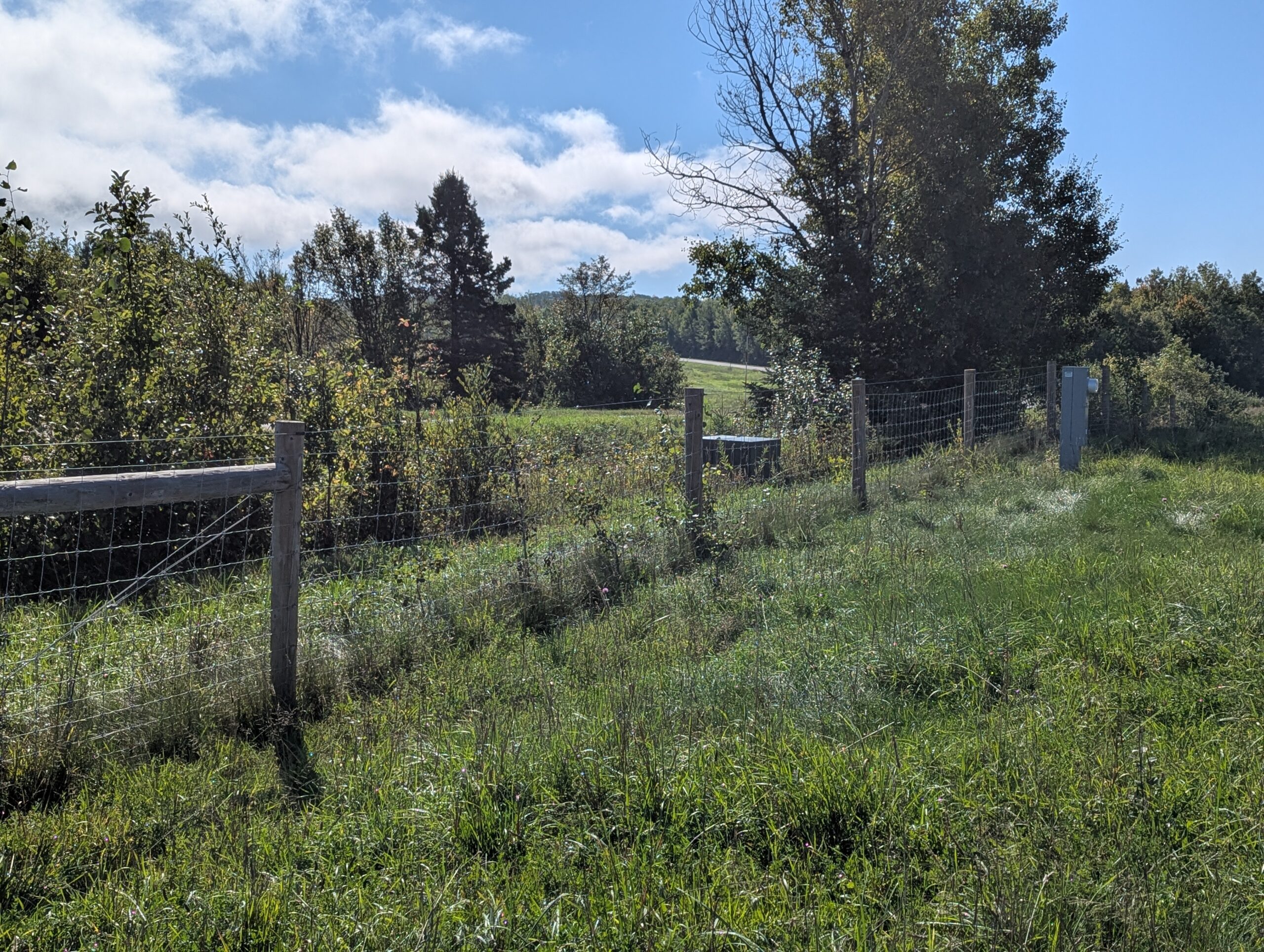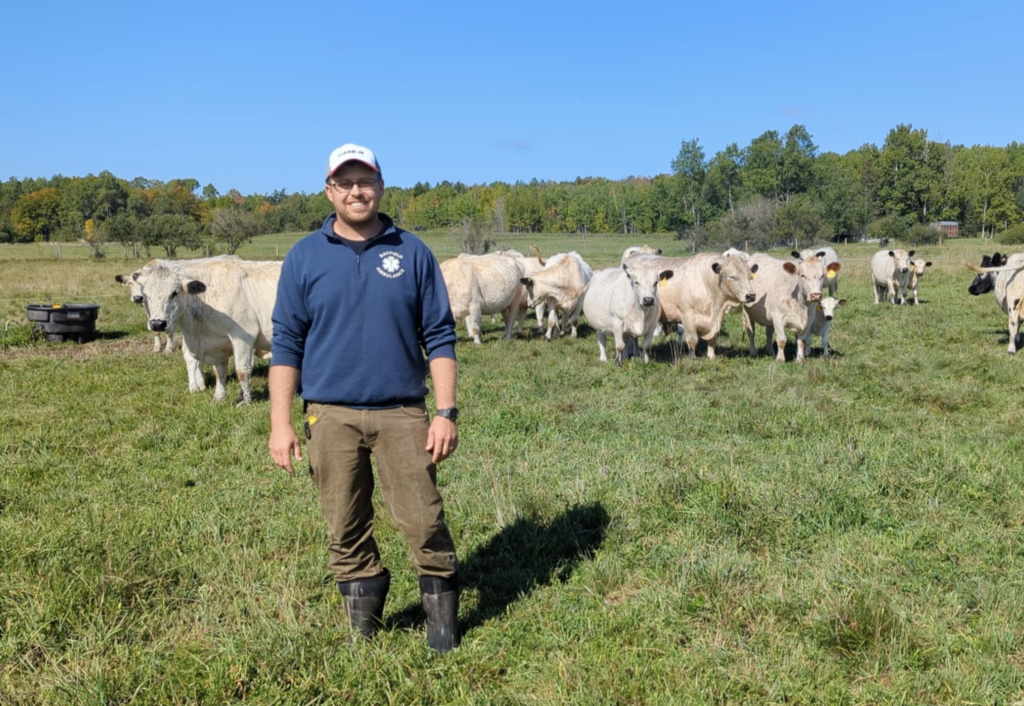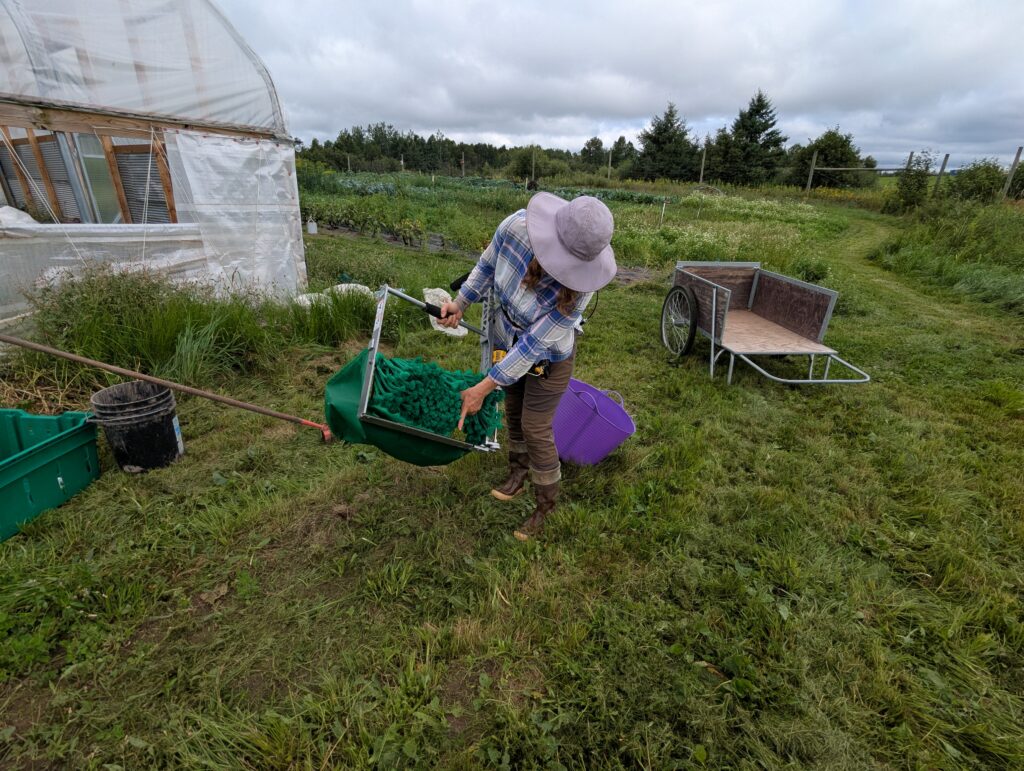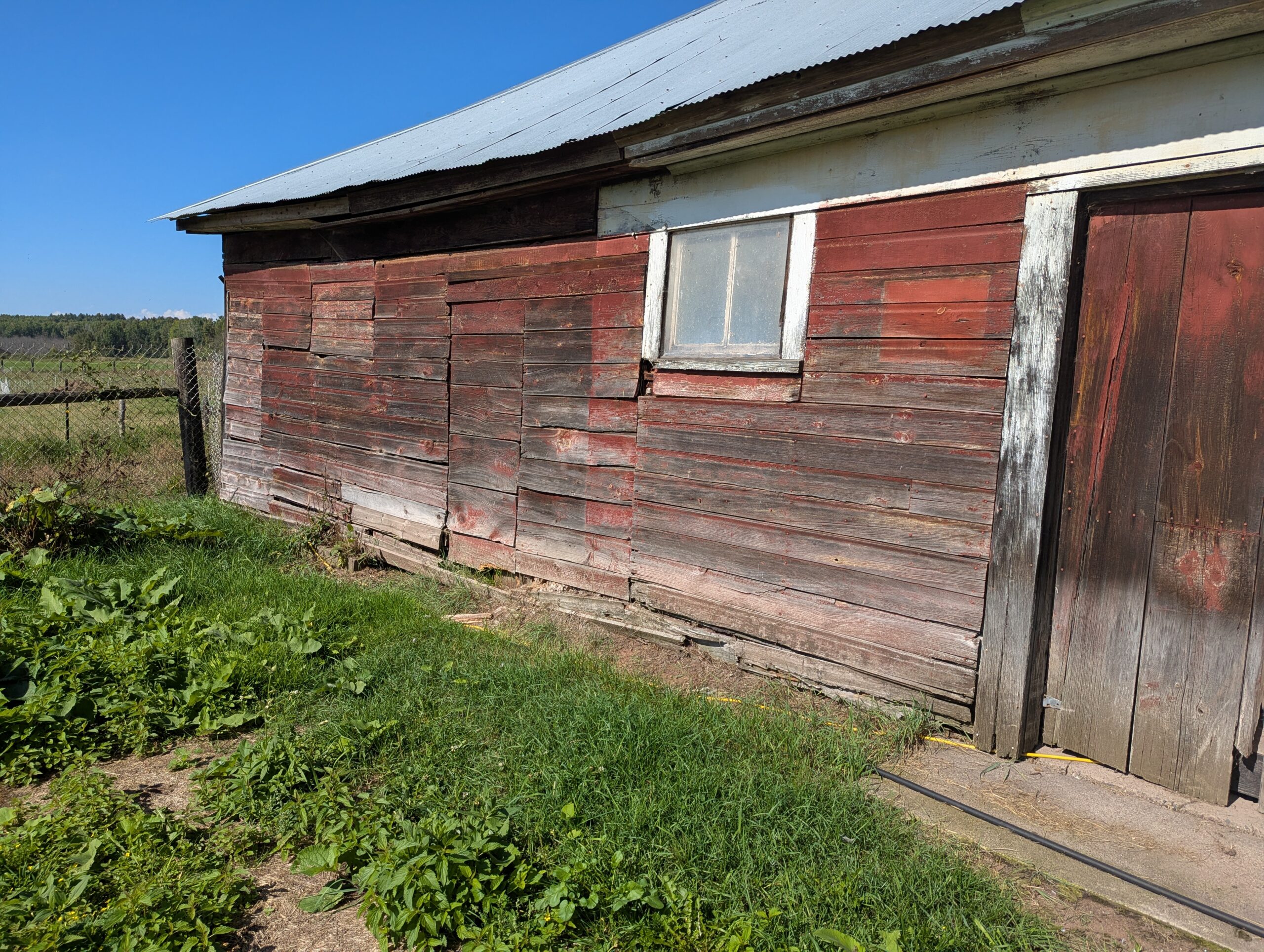GLFF Grant Helps Sörestad Farm Expand Orchard and Protect Crops
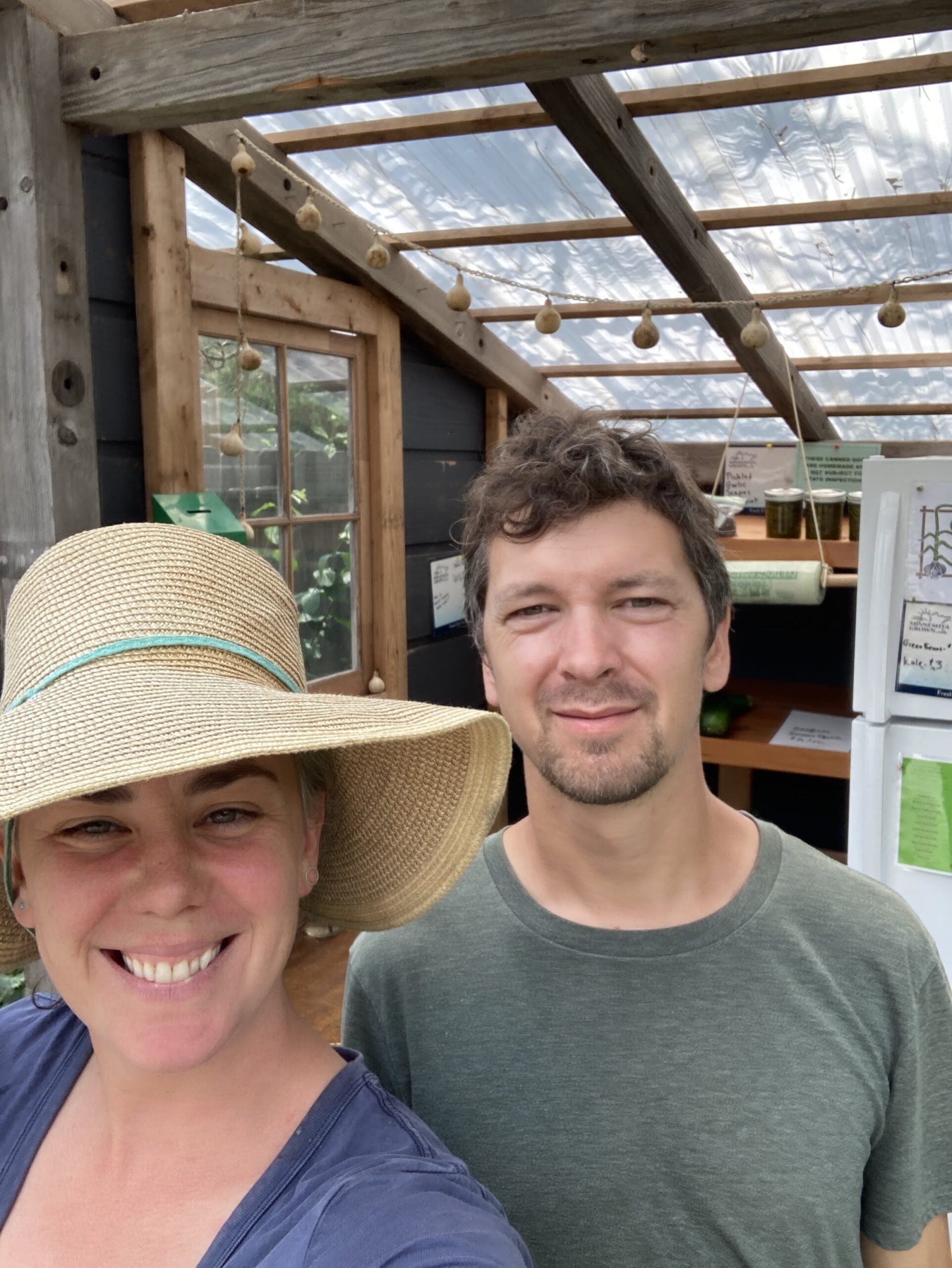
Up the North Shore but still in the Duluth city limits, Sörestad Farm is known for their heirloom apples, fresh vegetables, eggs, and cider. Named for the grandfather of one of the owners, the farm is a staple on the Clover Valley Farm Trail. But like many growers on the North Shore, they’ve faced a persistent challenge: deer.
“There is no way to grow food on the North Shore without a deer fence,” Julie, the farm’s owner, explained. For years, they’ve relied on seasonal fencing—T-posts and plastic netting—to protect their half-acre vegetable garden. It worked, but it was labor-intensive, temporary, and unreliable. That’s why, thanks to funding from the Grow Local Food Fund (GLFF) and additional support from the DNR, Sörestad Farm is installing a permanent, 10-foot-high woven wire fence around nearly all of their 10-acre property.
This isn’t just any fence—it’s the DNR-recommended high-tensile woven wire, built to last decades. It will protect their hoop house, vegetable garden, chickens, orchard, and the three acres of woods they’re actively restoring. With real gates replacing temporary ones and predator-proofing for their chickens, the fence will bring peace of mind and save countless hours of labor each season.
While a necessary roof repair delayed installation this fall, the farmers are eager to begin construction in the spring. Once complete, the fence will allow them to expand their orchard—home to five rare heirloom apple varieties, some over 90 years old. These trees are nearing the end of their lives, but the farm plans to graft and preserve them, alongside planting new fruit trees and native species in the fenced-in woods, removing the need to individually fence each young tree.
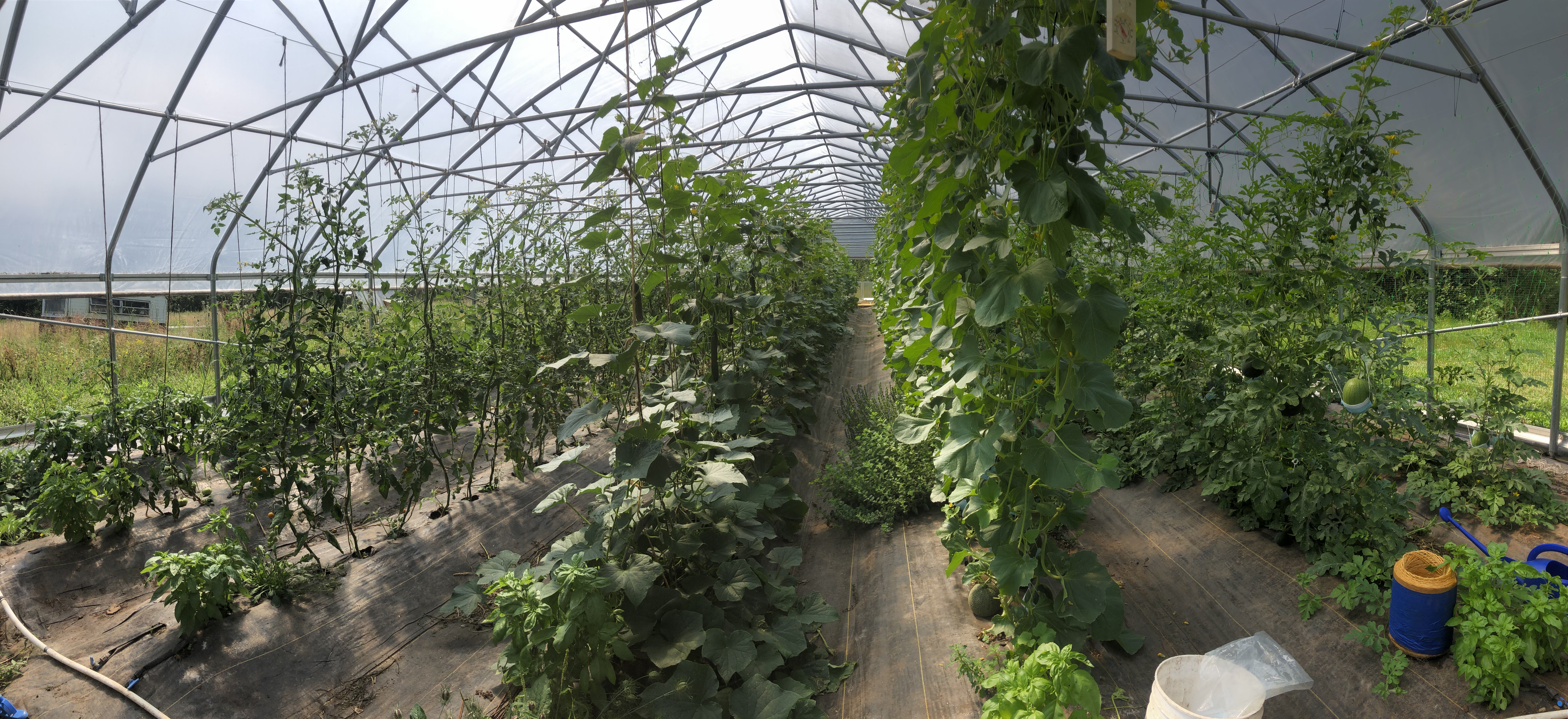
“We’re so delighted that the Co-op is doing this program,” Julie shared. “It’s such a beautiful way for dollars to stay in our community, for eaters to help producers, and to uplift our local food system.”
Thanks to the GLFF grant and the farm’s vision, Sörestad Farm is building not just a fence—but a foundation for long-term sustainability and community nourishment on the North Shore. When you round up for GIVE!, a portion of your donation goes to support the Grow Local Food Fund, and our regional farms and food producers, like Sörestad Farm. Thank you for rounding up!
Sörestad Farm sells their food at their farm stand on Homestead Road and on the Clover Valley Farm Trail. They also participate in the Northshore Farmers Collective subscription boxes, and you can find them at local festivals like Harvest Fest and Julebyen.
Learn more about them at https://www.sorestadfarm.com/ and follow them at https://www.instagram.com/sorestadfarm/.








